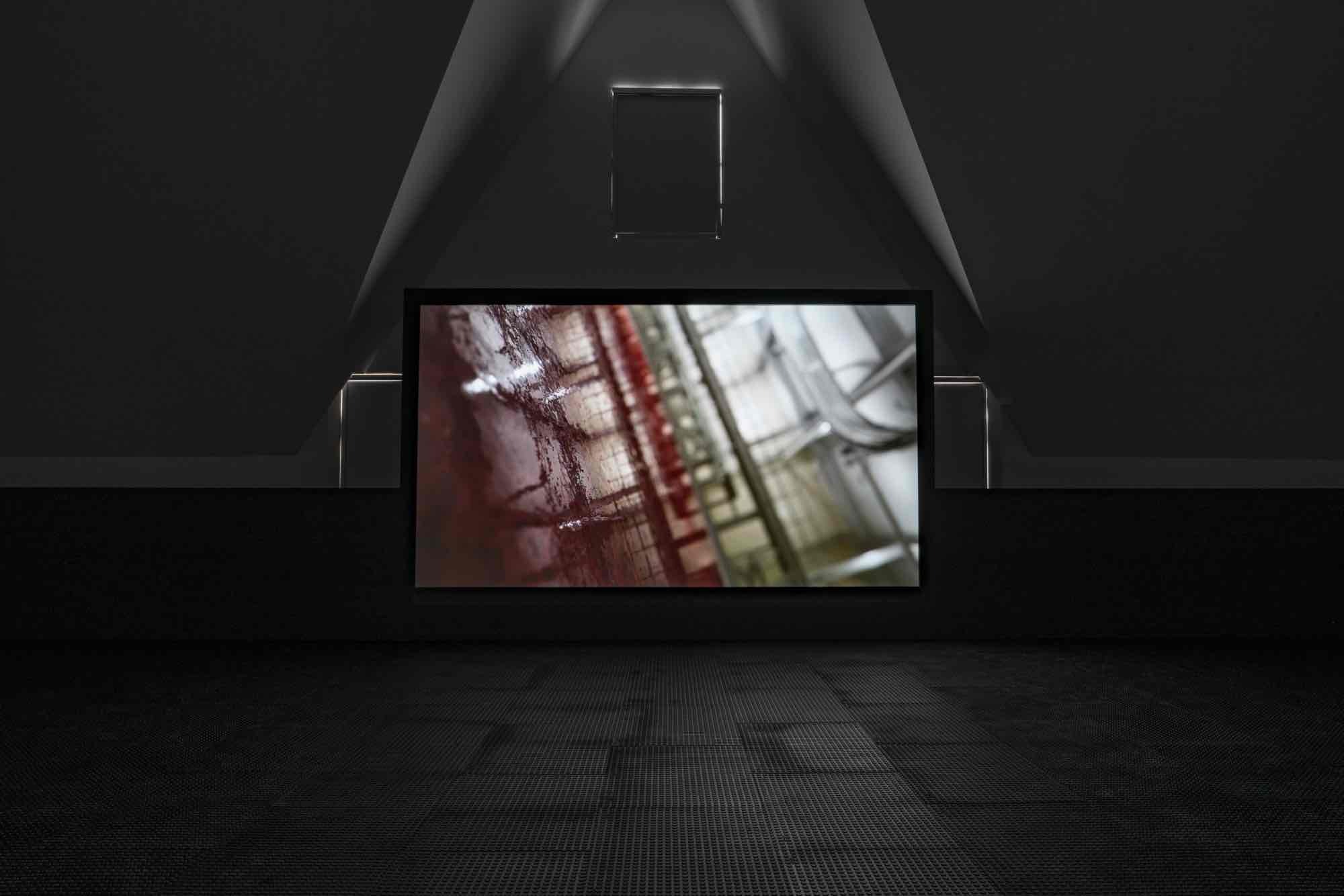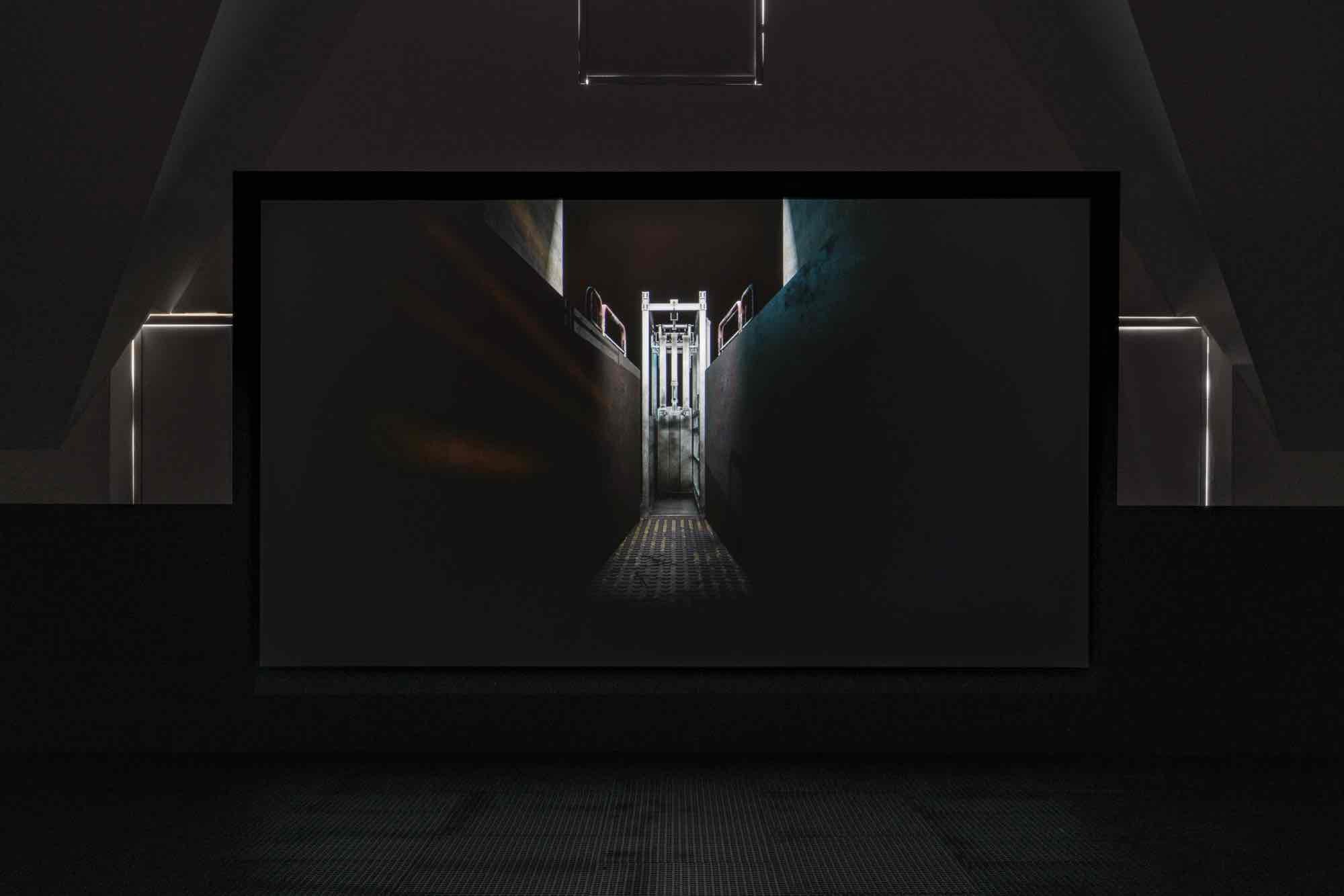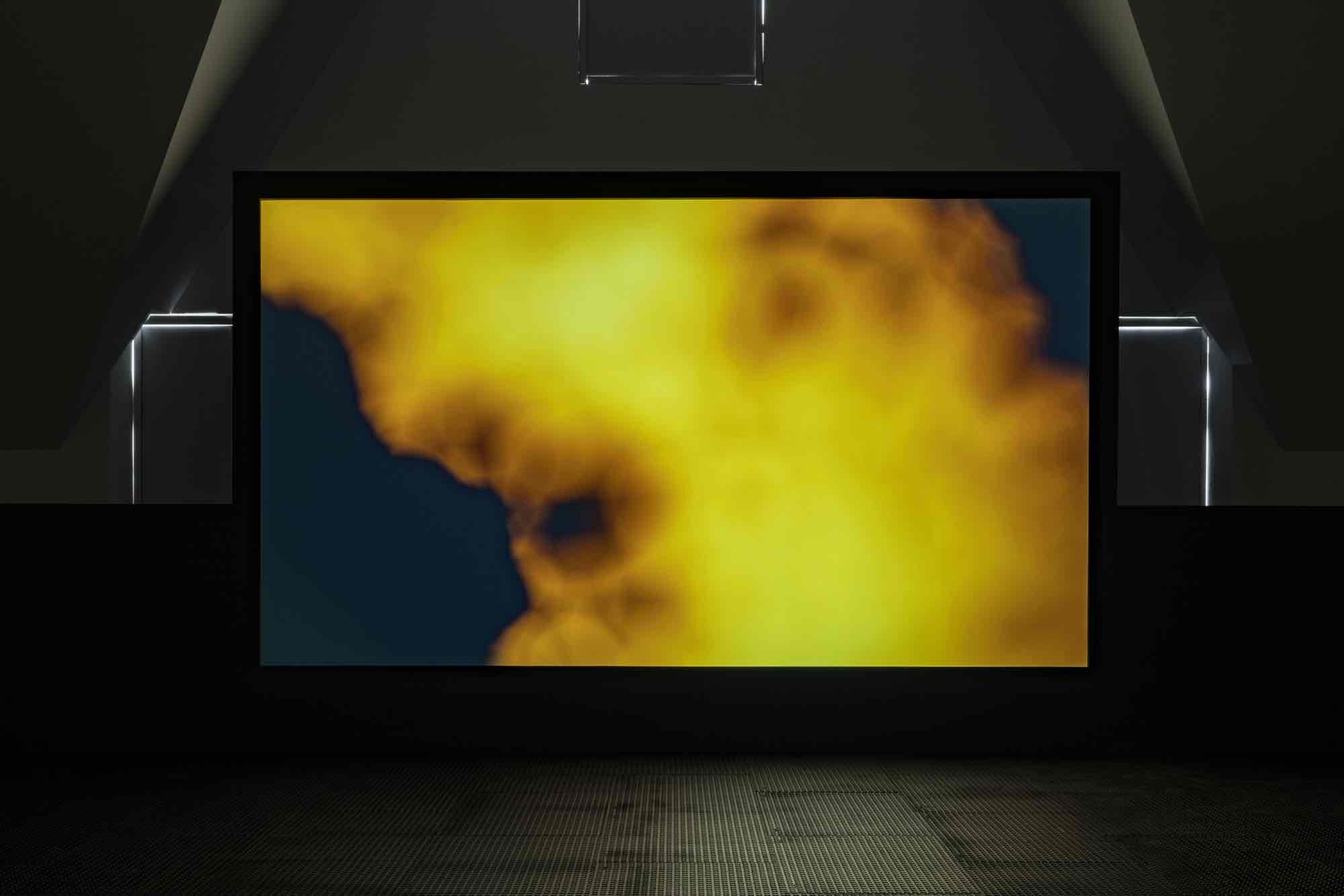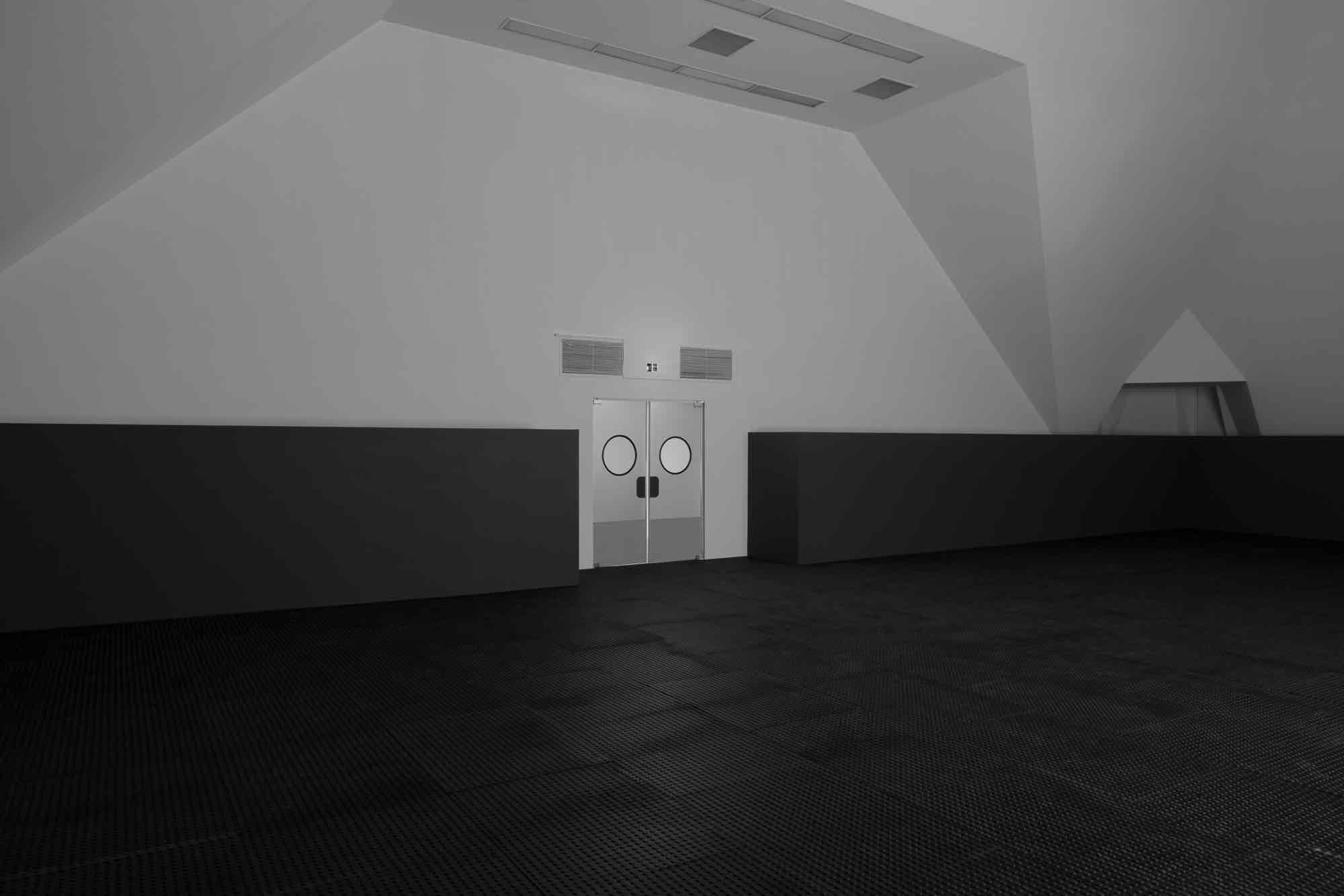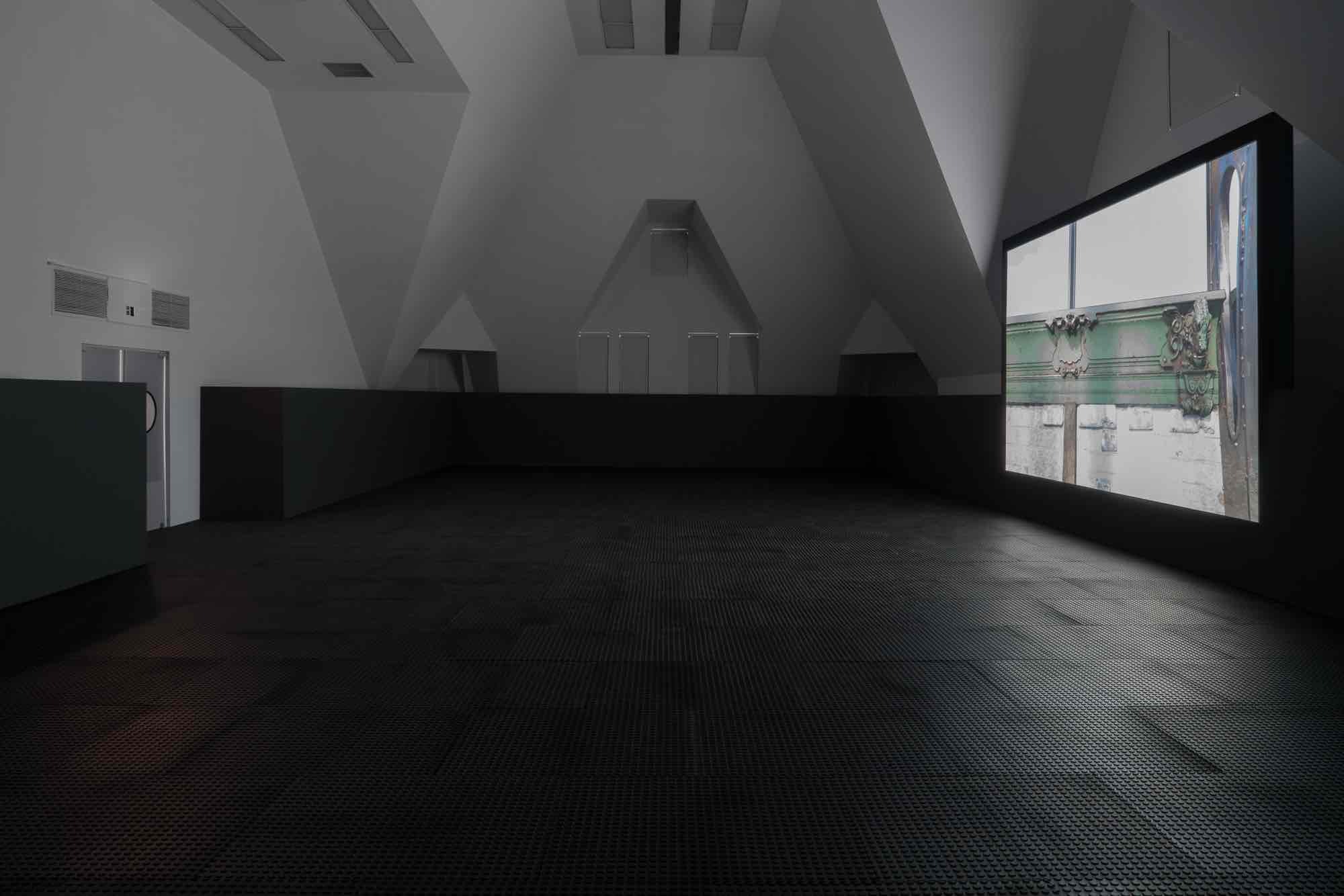Aria Dean
ABATTOIR, U.S.A.!
25 Feb - 16 Apr 2023
Aria Dean is an artist and writer who has created a multi-platform body of work based in trenchant critiques of representational systems. Confounding binaries such as abstraction and figuration, individual and collective, Dean’s sculptures, installations, videos, and essays trouble received ideas of race, power, and form. Concerned with what art objects can do, and have done, for their producers and receivers, Dean tracks artistic innovations against an array of theoretical positions, from poststructuralism to Afropessimism, not just to parse the social and material bases of art but also to grasp its impact on the ontology of Blackness. Minimalism has proven especially fertile for Dean: “insofar as minimalism evades the representational sphere almost entirely,” she writes, “pure play of forms and volumes and densities—it’s like having an amusement park all to myself, with the lights out.”
Abattoir, U.S.A.! is both the title of her solo exhibition at the Renaissance Society and the newly commissioned film that is at the center of it.
Abattoir, U.S.A.! surveys the interior of an empty slaughterhouse. The slaughterhouse is animated using Unreal Engine, a 3D computer graphics tool used to create real-time environments for a wide range of platforms. In Dean’s film, the viewer follows a linear path through an impossible architecture—a seamless combination of 19th, 20th, and 21st century design elements and non-Euclidean spaces rather than a direct model of an existing building. The film is accompanied by an immersive 8-channel score by composer Evan Zierk, which weaves together field recordings, samples, pop melodies, and algorithmically generated sequences. Influenced by Romantic-era classical composition and Hollywood melodrama, this multidimensional score plays a vital role in developing the film’s affective landscape, and its experimentation with the construction and limitations of narrative. Dean significantly altered the idiosyncratic architecture of the Renaissance Society to create the film’s viewing context. Laying a rubber floor on the ground, building side walls that echo the cattle’s path in a slaughterhouse, and adding an aluminum door, she created an uncanny doubling of what’s on view on screen.
Dean was initially inspired by philosophers Georges Bataille and Frank Wilderson, each of whom address the slaughterhouse in their writings—whether as a metaphor or paradigm—as crucial to the constitution of civil society. Abattoir, U.S.A.!, also builds on Dean’s own research into the slaughterhouse and industrial architecture, and the ways they reveal modernism’s intimacy with death on conceptual, political, and material levels. The film ruminates on this through the slaughterhouse’s presence as both an allegorical structure and a literal place where the boundary between human, animal, and machine is produced and reproduced. As it takes the slaughterhouse as its subject and projects its forms into a virtual space, Abattoir, U.S.A.! ultimately explores how meaning is produced through moving images, working across material, symbolic, and technological registers.
Curated by Myriam Ben Salah
Abattoir, U.S.A.! is both the title of her solo exhibition at the Renaissance Society and the newly commissioned film that is at the center of it.
Abattoir, U.S.A.! surveys the interior of an empty slaughterhouse. The slaughterhouse is animated using Unreal Engine, a 3D computer graphics tool used to create real-time environments for a wide range of platforms. In Dean’s film, the viewer follows a linear path through an impossible architecture—a seamless combination of 19th, 20th, and 21st century design elements and non-Euclidean spaces rather than a direct model of an existing building. The film is accompanied by an immersive 8-channel score by composer Evan Zierk, which weaves together field recordings, samples, pop melodies, and algorithmically generated sequences. Influenced by Romantic-era classical composition and Hollywood melodrama, this multidimensional score plays a vital role in developing the film’s affective landscape, and its experimentation with the construction and limitations of narrative. Dean significantly altered the idiosyncratic architecture of the Renaissance Society to create the film’s viewing context. Laying a rubber floor on the ground, building side walls that echo the cattle’s path in a slaughterhouse, and adding an aluminum door, she created an uncanny doubling of what’s on view on screen.
Dean was initially inspired by philosophers Georges Bataille and Frank Wilderson, each of whom address the slaughterhouse in their writings—whether as a metaphor or paradigm—as crucial to the constitution of civil society. Abattoir, U.S.A.!, also builds on Dean’s own research into the slaughterhouse and industrial architecture, and the ways they reveal modernism’s intimacy with death on conceptual, political, and material levels. The film ruminates on this through the slaughterhouse’s presence as both an allegorical structure and a literal place where the boundary between human, animal, and machine is produced and reproduced. As it takes the slaughterhouse as its subject and projects its forms into a virtual space, Abattoir, U.S.A.! ultimately explores how meaning is produced through moving images, working across material, symbolic, and technological registers.
Curated by Myriam Ben Salah


